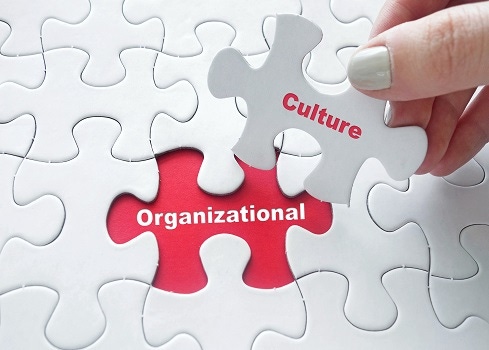The IT Leader’s New Imperative: Constructing the Culture
Here are five effective approaches for CIOs to expand their skillsets and build a resilient culture that can succeed in today’s enterprise organizations.

The No. 1 question I get from chief information officers is: “How do I get my team to change the culture and work in a new way?”
CIOs would be better advised instead to ask how they can improve their culture. My answer: Become “ultra-senior” leaders by applying the science of human behavior dynamics to optimize performance.
The 2020 zeitgeist and the construct of culture
I like to define culture as “the way we do things around here,” and the way organizations did things in January 2020 bears little resemblance to January 2021. Leadership has expanded to include cultivating culture, and leaders must evolve to ultra-senior leaders who focus on the science behind human behavior dynamics to optimize an organization’s workforce now. Whether the need is a simple cultural refresh or a radical paradigm shift, these five cultivation tactics should be in every IT leader’s tool kit.
1. Coaching
Coaching is sometimes dismissed as irrelevant, but at its root, coaching is readiness training for cultural and behavioral challenges. Brain-based coaching offers the psychologically safe space to prepare for unplanned, disruptive change by applying neuro-leadership techniques.
Brain-based methods teach leaders how to apply the “neurochemistry of trust” to cultivate culture. Applying conversational intelligence or “C-IQ” (the ability to empathize and adapt with agility) increases oxytocin (the “feel good” hormone) and minimizes cortisol (the “fight, freeze or flight” hormone). In other words, there’s a science to building trust in an organization, and you institutionalize the competency via coaching.
And it works: The head of digital transformation for a major pharmaceutical and labs company recently said “creating a psychologically safe environment” isn’t a phrase he ever thought he’d use, but the skills he’s learned through brain-based coaching have proven to be the linchpin of his success.
2. ABCs: Actions, behaviors, and C-IQ
Leaders drive results by ensuring certain experiences take place, and conversely, by safeguarding that certain behaviors never occur. This laser focus on actions and behaviors that align with “the way we do things around here” is the crux of cultivating culture.
Successful businesses are rarely built with unhappy teams or angry customers, so senior leaders should be mindful that they influence culture, and ultimately, bottom-line results, with their nonverbal and behavioral signals and feedback.
Learning emotional agility and conversational intelligence through coaching is foundational to transforming work environments and creating the actions, behaviors, and ideal culture for teams to thrive and produce successful business outcomes.
3. Goals
Coaching addresses the “ABC-IQs,” but culture becomes institutionalized through established corporate goals. On one recent project, a CIO and COO in the public sector teamed up to create shared leadership goals that included a “culture coalition,” a focus on internal net promoter scores, and regular evaluations of whether colleagues and employees’ work experiences are positive and psychologically safe.
Continuous improvement in culture, virtual leadership and diversity awareness are imperative for the foreseeable future. Institutionalizing cultural goals signals a paradigm shift that ABC-IQs are substantial enough to be measured. These proven steps will measure, manage and keep culture top of mind:
Conduct values and culture assessments,
Delineate both ideal and unacceptable behaviors and actions with guiding principles,
Create developmental goals for brain-based ABC-IQs.
4. The three Rs
Rewards and recognition, the first two Rs, drive 90% of results because they signal what is valued by the company. Recognizing that mindset shifts enable teams to work in new ways, CIOs cultivate culture by rewarding cultural competency and humility, interpersonal efficacy, and efforts to uncover unconscious bias.
Reinforcement, the third R, will institutionalize and drive the remaining 10% of the culture you’re trying to cultivate. Once behavioral change goals have been socialized, enforcing and taking corrective action ensures human capital optimization. Feedback in real time is vital. Partner with HR on what performance improvement in culture cultivation looks like for accountability in new ways of working and leading.
5. Change-leadership program
Today’s CIOs likely did not envision a need to focus on the human side of digital when they started their careers, but 2020 taught us that a strong organizational culture can make or break a digital journey.
Mindful leadership skills can be learned like any other technical skill. A structured, brain-based change-leadership program can teach leaders to create a psychologically safe environment that supports organizational resilience if the program targets ultra-senior leadership advocacy, not just executive sponsorship.
Ultra-senior leaders who demonstrate the behaviors that increase the neurochemistry of trust no longer have to ask how to get their team to work in a new way, because their teams already know what situational acumen, agility, trust and resilience look like, and as a result, they readily drive bottom-line growth.

Missy Lawrence-Johnston leads the ISG Operating Model & Human Side of Digital offering, with more than 15 years of experience as a thought leader and culture-change expert helping government entities, nonprofits and Fortune 100 companies. In her current role, Missy drives day-to-day deliverable execution and client relationship management and is ultimately accountable for culture deliverables and client/project-team leadership for digital and enterprise organizational effectiveness. Her highlighted competency is in global enablement for digital transformations, with a focus on team dynamics, change leadership, and empowering psychologically safe environments.
About the Author(s)
You May Also Like





